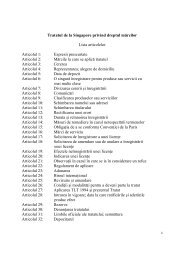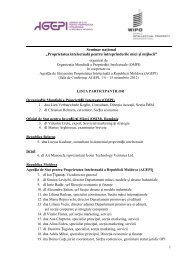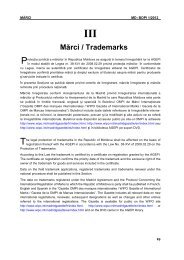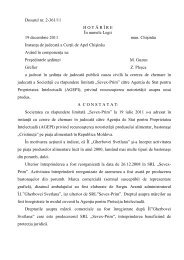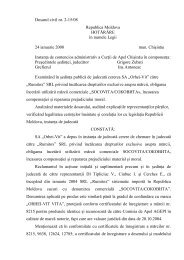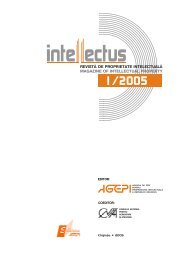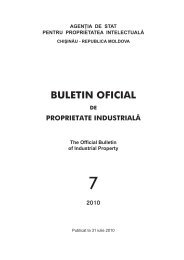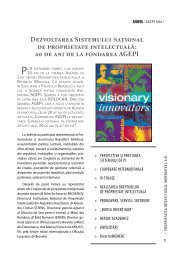IN T E L L E C T U S 2 /2 0 1 3 - agepi
IN T E L L E C T U S 2 /2 0 1 3 - agepi
IN T E L L E C T U S 2 /2 0 1 3 - agepi
You also want an ePaper? Increase the reach of your titles
YUMPU automatically turns print PDFs into web optimized ePapers that Google loves.
ABSTRACT<br />
Asthma and allergic rhinitis prevalence levels are<br />
constantly growing worldwide, being influenced<br />
by the genetic background, environmental factors<br />
and their interaction. Allergic rhinitis in asthma patients<br />
increases up to 50% asthma hospitalization<br />
rates among adults and up to 25% among children.<br />
Given the coexistence of these allergic disorders<br />
an integrated management is recommended. The<br />
innovative method is based on the results of the<br />
case-control study that included 180 children and<br />
aimed to assess genetic and environmental risk<br />
factors and their interaction within the etiological<br />
mechanisms of allergic diseases in autochthon children.<br />
The mathematical predictive model revealed<br />
the following risk factors: presence of the heterozygous<br />
genotype with one allele functionally compromised<br />
(CC16 G/A) of the CC16 38 G>A gene polymorphism;<br />
onset of asthma by the age of 3 years;<br />
presence of molds in the house environment; family<br />
history of allergy in mother and/or father; and<br />
complicated evolution of pregnancy and/or birth.<br />
The proposed method will raise the efficiency of<br />
secondary and tertiary preventive measures taken<br />
for high-risk groups of children.<br />
Keywords: asthma, allergic rhinitis, child, risk<br />
factor, CC16 gene, polymorphism, predictive model<br />
COMUNICĂRI ŞTI<strong>IN</strong>ŢIFICE/<br />
SCIENTIFIC COMMUNICATIONS<br />
Intellectus 2/2013 | 111



